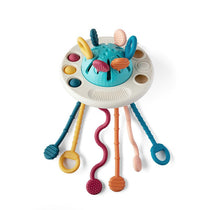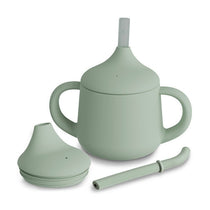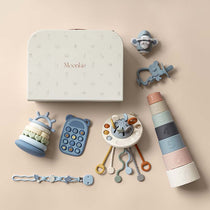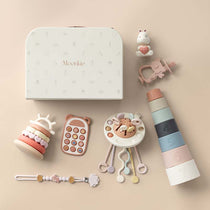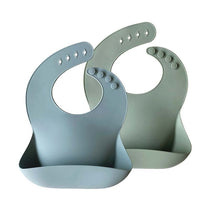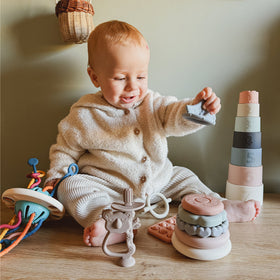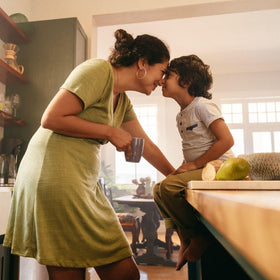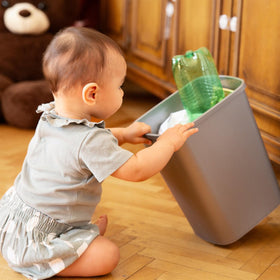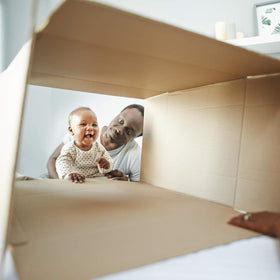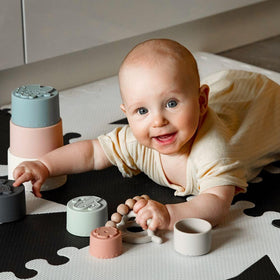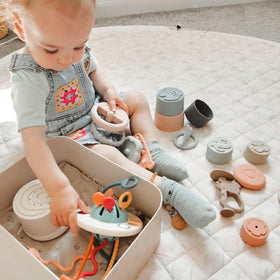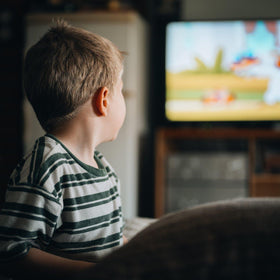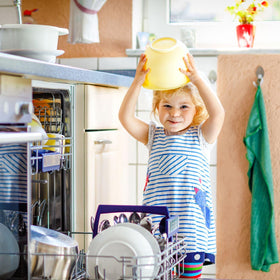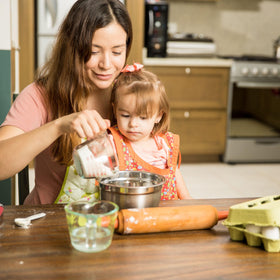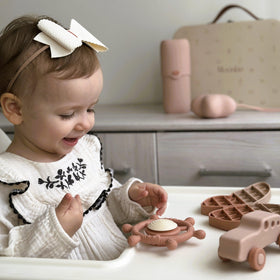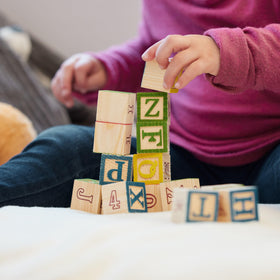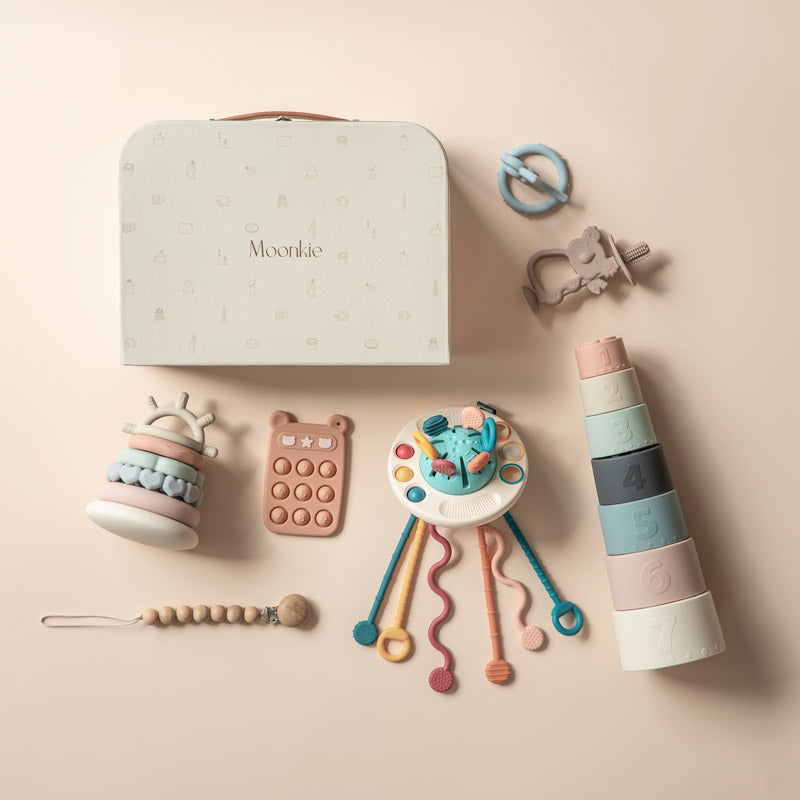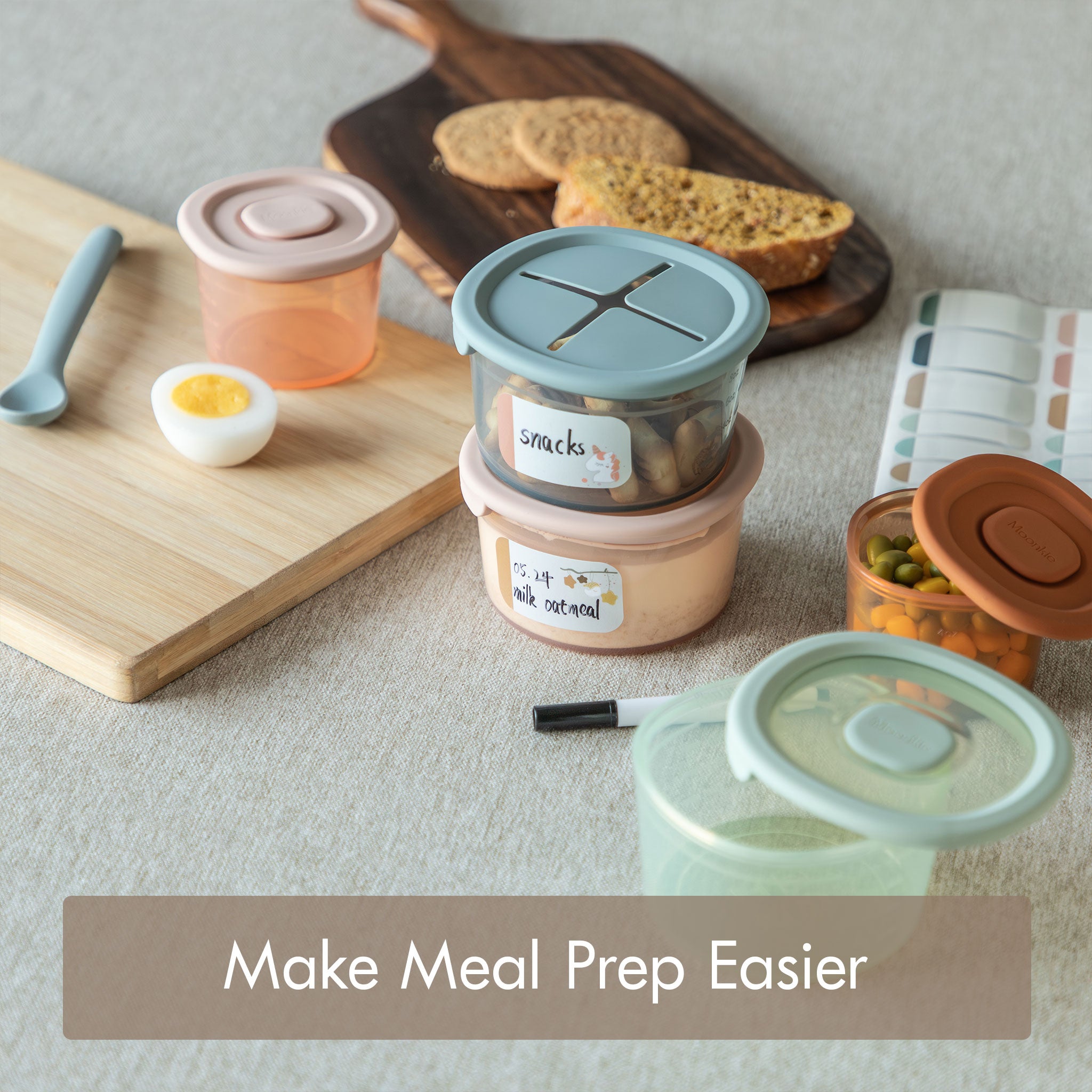
We all want the best for our children: success, happiness, and fulfillment in whatever they set their minds to. Montessori education methods build children up in a well-rounded approach, but how on earth are we supposed to do it at home?
The Montessori education method has gained popularity among homeschooling parents because of its child-centered approach. Homeschooling with the Montessori method combines the best of child-led learning with curriculum freedom, but it isn't easy on parents. How do we survive and thrive?
In this guide, we will take a long, hard look at the Montessori method--the good, the bad, and the ugly--to see what it's really like to do it at home and whether it's worth the effort.
The Power of the Montessori Method
Of all the education methods, programs, and curricula for homeschooling these days, finding an approach that fosters a child's natural curiosity, creativity, and independence while providing structure and discipline is surprisingly tricky.
Enter: the Montessori method.
The Montessori education method, developed by Dr. Maria Montessori in the early 1900s, stands on the well-observed principle that children learn best through hands-on experiences and exploration.
Emphasizing self-directed learning and encouraging children to develop their own interests and passions, the Montessori method can look a lot like playing games and doing activities in the day-to-day routine.
Through playing within the boundaries set by rules, Montessori activities focus on developing the whole child, including their intellectual, emotional, and physical growth.
So, siblings working together on an activity will engage in social skills like sharing, communicating, and teamwork while exercising cognitive skills like problem-solving, estimation, and memory.
And yeah, playing does this too, but school becomes enjoyable when playing and homeschool activities don't look that different! Genius!
Montessori Homeschool Results
Studies repeatedly show that the Montessori method positively impacts academic and nonacademic outcomes, especially when compared to traditional education methods (source, source, source).
Even Montessori students who are now working adults showed elevated psychological well-being than those who had attended conventional public or private schools as children (source).
Of course, many factors can contribute to this, and more research is needed, but comparing thousands of individuals among several studies is a decent starting point.
Parents are choosing homeschooling more and more as resources and internet coverage become more readily and cheaply available (source). And it's working. Homeschooled students are outperforming their public-schooled counterparts (source).
So what about combining the best of both worlds? It's a challenge, but it can be done with planning.
What Does Montessori Homeschooling Really Look Like?
Montessori homeschooling looks like a mess on the surface but is a carefully planned set of activities inside. Parents plan ahead using a resource, like Montessori for Homeschoolers, gather the materials, and set up a clutter-free area with the day's activities before setting their kids loose to play.

The schedule for each day typically has lots of margin to make room for focusing on something longer, moving between activities at will, and living life. A parent is typically available for guidance and support when needed, but not actively involved in telling the child how to do things and when.
Montessori homeschoolers learn at their own pace by exploration and discovery first, then they can answer questions or read and listen to content about the principles behind each activity. So, though it seems unstructured, Montessori homeschool activities are structured activities with built-in freedom of time and movement.
The Challenges of Implementing the Montessori Method in a Home Setting
One major hurdle for homeschoolers is socialization. A pillar of Montessori education is putting kids of several ages into the same classroom to do the same activities together.
Homeschool families with more than one child at home can achieve this but still need to arrange for "group homeschool days" or "co-op days" with other like-minded homeschool families to get that interaction with non-family members for their children.
Another big challenge of implementing the Montessori method in a home setting is creating an environment that is conducive to learning in the midst of home life.
Unlike a traditional classroom, a Montessori learning environment is designed to be child-centered, uncluttered, and flexible. Though your child will likely feel comfortable learning at home, creating a distraction-free space is hard.
Balancing the Montessori Approach with State Curriculum Requirements
Another challenge of implementing the Montessori method at home is balancing it with state curriculum requirements. While the Montessori method is focused on child-led learning, you must meet certain academic standards.

Going to your state's elementary and secondary education website and reading up on your state's standards will help you keep them straight when choosing Montessori activities for your little one. However, this can be tricky with high school requirements.
The Montessori approach holds practical life skills highly, while state curriculum requirements clearly do not. So, making standard state math requirements practical is crucial to maintaining the activity and interest feel of Montessori homeschooling.
For example, doing sewing, quilting, or construction projects for geometry would apply that standard textbook geometry to real-world skill activities. Starting a business, dabbling in investing, or undertaking an engineering project would help with algebra.
For chemistry, soap or candle making, cooking, or gardening all apply. It is challenging to weave state education requirements into the Montessori method at home, but it is possible!
Incorporating Technology into a Montessori Homeschooling Program
While the Montessori method is focused on hands-on learning, technology is still an important part of a Montessori homeschooling program because it is a real-world skill nowadays.
Staying away from screens and technology is best for preschoolers, toddlers, and babies because they don't benefit much. Screens are simply a babysitter for parents at these stages.
However, you can use technology to supplement and enhance learning experiences at the elementary, middle, and high school levels to keep children engaged and interested in learning.
There are loads of apps and programs out there for this, like ABC Mouse or Adventure Academy. But again, such programs are extras that are not Montessori-inspired and should probably be limited in time.
Real-world technology for running a business, mapping out a construction project, tracking the stars, researching content for essays, and other similar uses are all acceptable and valuable modern tools for homeschooling.
Adapting the Montessori Method for Children with Special Needs
Children with special needs can thrive with Montessori activities adapted to meet their needs. Since the Montessori method is child-centered and child-led, adapting it for special needs is straightforward compared with adapting the public school curriculum.
Montessori education's flexibility and freedom are built around the child, so modifying the space for disabilities can be done as needed. Moreover, the freedom to circle back to the same activity as desired can be helpful.
How to Start Montessori from Home
Starting a Montessori homeschooling program can seem daunting at first, but once you learn the ropes, gather resources you like, and find a place to source materials you don't readily have nearby, it can be a rewarding and effective way to educate your child.
Here are some tips on how to get started with Montessori from home:
1. Learn About the Montessori Method
You've got to understand what something is before you use it in your child's education. It's even more vital to know what Montessori is and what isn't these days because the Montessori method's popularity has soared in recent years, and its label has been slapped on everything.
Living with the internet at your fingertips means you can even take Montessori homeschool training courses online to learn the ropes and get connected to resources and other like-minded parents.
2. Learn About Your Child's Development
Initially, I had no idea of what to expect in my first child's development. I had read a book, pestered older moms with questions, and done some research, but everything was general. When I finally invested time into reading studies and credible sources, things made so much more sense!

Learning what your child develops and when will help you understand what she is capable of. Knowing her emotional, physical, and cognitive abilities will help you choose age-appropriate activities and books so that you don't overwhelm or frustrate her.
For a quick, surface-level glance of your child's development early on, read 7 Things Every Parent Should Know About the Early Stages of Child Development.
3. Schedule Ahead
Scheduling your day ahead helps you stay on top of Montessori activities, prepare the space you need beforehand, and give yourself time and permission to stay engaged and involved.
I get it; scheduling isn't for everyone, especially one parent versus three kids at home. I was not a scheduled person until after my second child, but I found that it actually helped calm the chaos, not because of the schedule, but because keeping to a schedule forced me to say no---a lot.
I wanted to keep up with everyone and go to all the birthday parties, dinners, and events at the library. But I would get stressed about not getting things done and trying to hurry the kids. What I was actually accomplishing was stress, frustration, and body aches more than anything else.
None of us enjoyed the events we attended back then. So, I created a schedule with at least three hours of margin daily and began saying no to nearly all the extras. Life got sweeter and less chaotic, for sure!
When to Start Doing Montessori at Home
Anytime! You can start with an infant by choosing passive toys or you can start with a middle-schooler who would like a fresh start with something more engaging. Doing Montessori education at home would probably not be an easy jump for super socially active kids.
The first three years of a child's life are a critical period for their development because babies and toddlers are absorbing information from their environment at an incredible rate. Montessori activities for infants and toddlers can foster sensory experiences, language development, and opportunities for movement and exploration.
Learn more about Montessori education for young children in Early Childhood Skills and Montessori Education: What You Should Know.
The ideal time to start is in the preschool years (three to six years old) because preschoolers are old enough to understand and engage in activities yet young enough to not be in deeper material that requires more planning and creativity from you.
Struggling to think of some activities your preschooler would enjoy? Here's an article with some activities you can do with your preschooler at home: 7 Unique Preschool Sensory Activities for Homeschool.
The elementary school years (six to nine) are a time of transition for families as children begin to move from easily understood concrete to not-as easy-to-understand abstract thinking. Montessori materials and activities for this age group can help support this transition by providing opportunities for exploration, creativity, and critical thinking.
The real curveball comes in the middle school years (nine to twelve) because of puberty and increasing independence and responsibility. Montessori education at home can give your middle schooler time to research, learn, and self-reflect at his own pace--time not afforded to public schoolers.
Cons of Doing Montessori Education at Home
While Montessori homeschooling can offer many benefits, it isn't perfect. Certain personalities may not thrive in Montessori methods specifically or in homeschooling in general. Likewise, some parents or lifestyles don't mesh well with either Montessori or homeschool styles, and that's okay!

You can totally pick and choose elements of different education styles. Just do what works for your family and your child's learning style.
Here are some common cons to doing Montessori education at home:
1. Lack of Structure
Montessori homeschooling is child-led, meaning children can explore and learn at their own pace. However, some children or parents may struggle with the "lack of structure."
If a child has already been in traditional schools for years, they may find it difficult to adjust to homeschooling in the Montessori-style. Whether it's a struggle to focus, share, change activities, or simply settle down, the lack of a change of place and teacher can spark behavior problems.
You can mitigate some of these behavioral issues by laying out clear rules and consequences in a visual way (chart, ruler, reward system). Celebrate wins while being firm and consistent with consequences. Some days will be rough, but overall, behavior should trend upward. Reach out to other homeschooling parents for support and ideas!
2. Need for Specialized Materials
Montessori materials are intended to be hands-on and interactive, but they can be expensive or difficult to find, depending on where you live. Some parents have the means or connections to resources, but others may find this challenging.
This struggle will grow as your child grows. Initially, simple materials will work well. But eventually, tools like microscopes, special programs, or a chemistry set will be necessary to complete state course requirements. These can possibly be borrowed or shared among a homeschool community near you, so reach out!
3. Difficulty Balancing State Requirements
The states won't view a "well-rounded education" the same way you do, so striking a balance that satisfies requirements while building your child's real-world skills and interests will challenge you.
Stay up to date on state requirements and put textbook material into real-world practice wherever you can. Homeschool co-ops help make this possible!
4. Limited Socialization Opportunities
Montessori homeschooling can provide opportunities for children to connect with other Montessori homeschooling families and communities, but it may be more complicated to find socialization opportunities outside of these communities.
Again, finding a homeschool co-op near you or online and committing to attending meetings regularly will help you here!
5. Need for Parental Involvement
Montessori education is all about child-led learning, but it takes a lot from parents to plan, set up, answer questions, guide, and support. It is exhausting!
However, it is also the most important task you do as your child's educator. Everything you do contributes to your child's well-being and future success.
In a Nutshell
How often in life does the best thing for your child happen to be the most difficult in some ways? Doing Montessori education at home is a challenging yet worthwhile endeavor that will give your child an amazing foundation for life. To survive and thrive in Montessori homeschooling, the most valuable thing you can do is get connected to a homeschool co-op!











